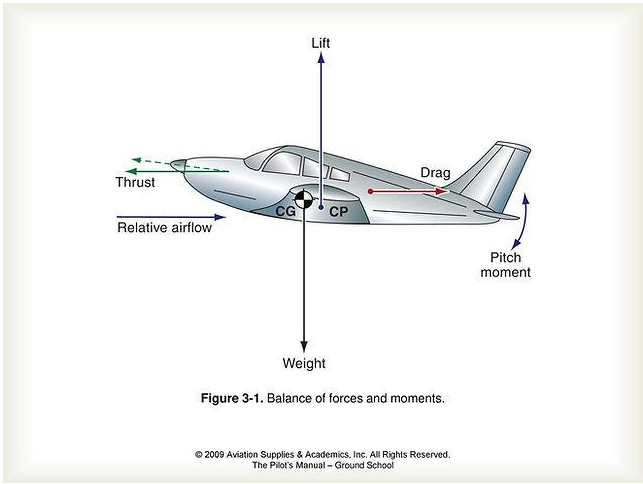Welcome to the tour of supersonic travel – a concept that intrigues not just aviators, but even the common man. For an airplane, speed isn’t just a matter of convenience. It is not just one more factor among many but is an absolute game-changer. With this mode, what could be done in many hours, is achieved in no time.
Concorde was the first supersonic experiment in the history of flights, but it was later disbanded. But aside from the Concorde, there were other trials too. There were other important historical supersonic flight attempts, each contributing either unique lessons or further advancements in technology to the field of supersonic travel.
Sit tight as we explore this electrifying world – the history of supersonic flight, its myriad challenges, and how it might just redefine the future world of aviation.
Challenges in Supersonic Travel
Supersonic travel is fraught with countless challenges. They can be summarized in three groups: technical, economic, and environmental hurdles.
Technical Issues
Concerning supersonic flight, the most prominent and major engineering problem is that of the sonic booms created by supersonic flight. As stated by Laananen, these sonic booms are basically “loud, thunder-like noises” produced by an object when it is moving at a velocity higher than the speed of sound.
One other fundamental obstacle, at a technical level, is fuel consumption. Supersonic jets suck up much more fuel in comparison to their subsonic counterparts, and they are thus less efficient and more expensive to operate. The engine technological advancement and aircraft design improvement are some of the factors behind the problem.
There is also a big challenge regarding heat management. The further increase in speed brings with it more air friction, which raises the temperatures on the airframe. This results in heated materials and designs capable of withstanding these raised temperatures, yet not letting this affect safety or performance.
Economic Challenges
It is extremely costly to develop and operate a supersonic airliner. The research, testing, certification process, and procurement of an aircraft involve high investment both in terms of expense and airplane travel time. High fuel burn and maintenance further add to the operational costs.
Besides, this necessary charging of high ticket prices, in order for it to be profitable, may limit the affordability of supersonic travel for a great number of passengers and thus narrow down its market for a special class of people with money only.
Environmental Issues
Supersonic airplanes, like any other aircraft, are expected to cause atmospheric pollution through carbon emissions from high fuel consumption. Supersonic flights would also have major concerns in terms of ozone layer depletion. This is on the ground of whether supersonic flights would lead to more destruction of the ozone layer compared to subsonic flights because they have extremely high service altitudes.
And however sweet the enticement of supersonic travel might be, there exist insurmountable obstacles that must be overcome for it to become a widespread reality.
Current State of Supersonic Travel
Despite these problems, the supersonic transport is not a dead issue. New ideas in this field have created a kind of fresh explosion of interest and hope for realistic sustained flights in the near future.
Of these, one of the most promising projects underway is NASA’s. America’s premium space agency is working on the X-59 Quiet SuperSonic Technology (QueSST) aircraft. This experimental airplane travelling has been designed to change the loud, pavement-rattling sonic boom of super-powered airplanes to a soft thump instead.
If the concept works, it will pave the way for lifting present regulations against overland supersonic flights and greatly expanding the practicality of supersonic travel.
Another great instance is in the making by Boom Supersonic – the Overture Airliner. The Overture, through its uniqueness, is designed to make supersonic travel cheaper; it will be more than two times faster than today’s fastest airliners. They are also critical of standards of sustainability as the company is currently making provisions so that the aircraft can run 100% on sustainable aviation fuel.

At the same time, new materials and designs are explored and developed to be used in better managing heat during supersonic flight. This is coupled with advancing fuel efficiency and building a progressive engine to be able to reduce noise and emissions.
However, these breakthroughs are still in the research or pre-production stage. When and if ever these new technologies are tested, approved, and integrated into commercial aircraft could easily be a matter of years from now. Nonetheless, they represent quite dramatic strides forward for the day when supersonic commercial travel will not only be a reality but practical as well.
Future Outlook of Supersonic Travel
The revival of interest and investment in supersonic technology now appears bright more than ever.
Advancements in Technology
Key among them is that technological advancement will resolve the many problems of supersonic flight. In no uncertain terms, technological advancement would, in itself, translate to improved technology in especially the areas of engines that will be increasingly quieter and more fuel-efficient.
At the same time, there will be an overwhelming need for further development in new and better aerodynamics. Modern designs that will come with innovations to reduce drag by proper heat management will lead to better speeds as well as fuel consumption. Some of these advanced materials will be impervious to high temperatures without changing structures.
Prospects
Prospects of fast supersonic travel may be closer than we can imagine. The necessity to cover long distances is increasing with busy professionals emphasizing the value of time. Possible routes would be inclined towards long-distance flight paths between metro cities of the world.
Another important factor is the viability of pricing. While the first ticket prices were criticized as being ridiculously exorbitant, it is opined that maybe years later costs will moderate, and supersonic travel will become more readily available.
Regulatory Outlook
It would also be crucial in shaping the supersonic future with the regulatory landscape. As of now, existing regulations have tightened a noose around supersonic jets due to noise pollution.
If such capabilities to significantly minimize sonic booms from projects such as NASA’s X-59 QueSST are fruitful, then we might experience modifications in these regulations. This will automatically open for further collection of routes and ways the development and acceptance of supersonic travel.
Impact on Commercial Aviation
This modern technology has made it so easy and attractive, but there are potential downsides that it might present which will otherwise upset the current dynamics of the market.
Potential Benefits
One of the biggest boons of supersonic travel is time savings. It will imply that journey times taken by intercontinental flights when traveling at double the speed of currently existing commercial aircraft will be halved or less. This will revolutionize international business, holiday departures, and arrivals.
The supersonic flight also opens up premium-class service opportunities. Airlines could sell this to passengers for a premium price who want to travel faster while saving time.
Potential Barriers
Nonetheless, with the introduction of super-sonic service, a market segment is likely to be created. If super-sonic airfares are pegged high enough that only a few rich travelers can afford them, then an informal social division will be drawn between those who can buy fast service and those who are condemned to slower subsonic flights. This recreates and exacerbates today’s unequal access to air travel.
That could also have far-reaching implications for existing airlines and plane manufacturers. Airlines will need to invest heavily in new supersonic planes and overhaul their setups for the new service, which would surely face fresh competition from new entrants offering supersonic travel.
For airplane makers, the shift may require massive investments in terms of research and development and more still with regard to new manufacturing and certification processes. Companies that can’t adjust quickly enough could risk losing their well-earned market share.

Wrapping Up
From the first flights of Concorde, commercial supersonic travel has promised to open up a new golden age of air travel. Today, regular flights at supersonic speed take on a new reality with technological advances lit by both public and private sector investment.
Personally, from the perspective of a commercial pilot, the actuality of supersonic travel transcends beyond the realm of “if,” but rather “when.” The way technology is changing today, with added marketing efforts, we all are bound to travel at supersonic speed in our lifetime.
The evidence is clear to lead to such an emerging trend of supersonic flight. It may even make the world smaller to cut down on the time that would be spent over a long journey. It always excites me to think of flying at Mach speeds above the sound barrier. I would really look forward to getting that experience as a pilot someday.








Leave A Comment